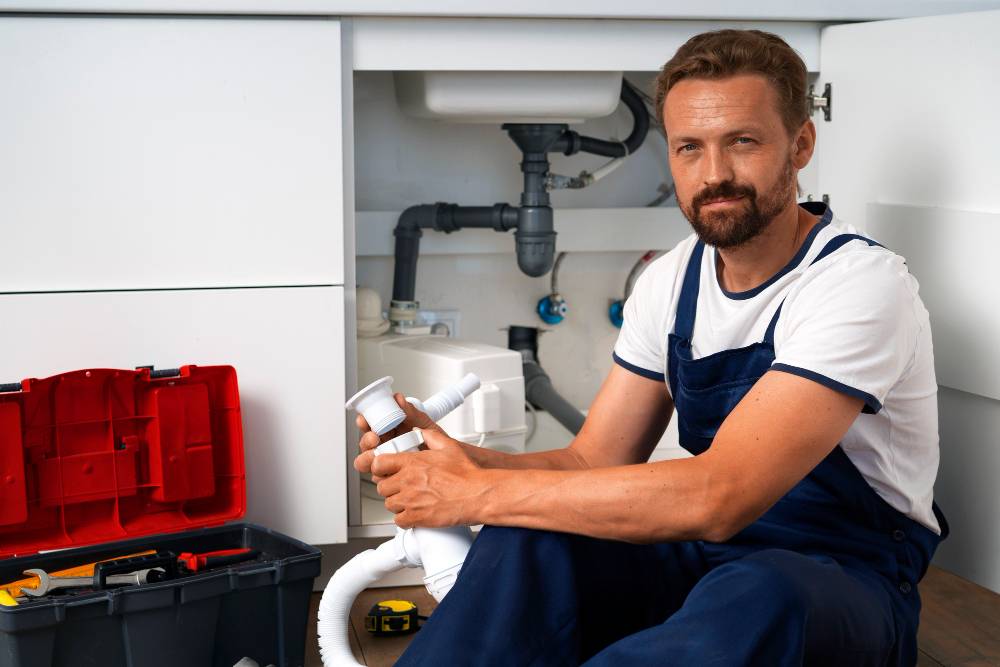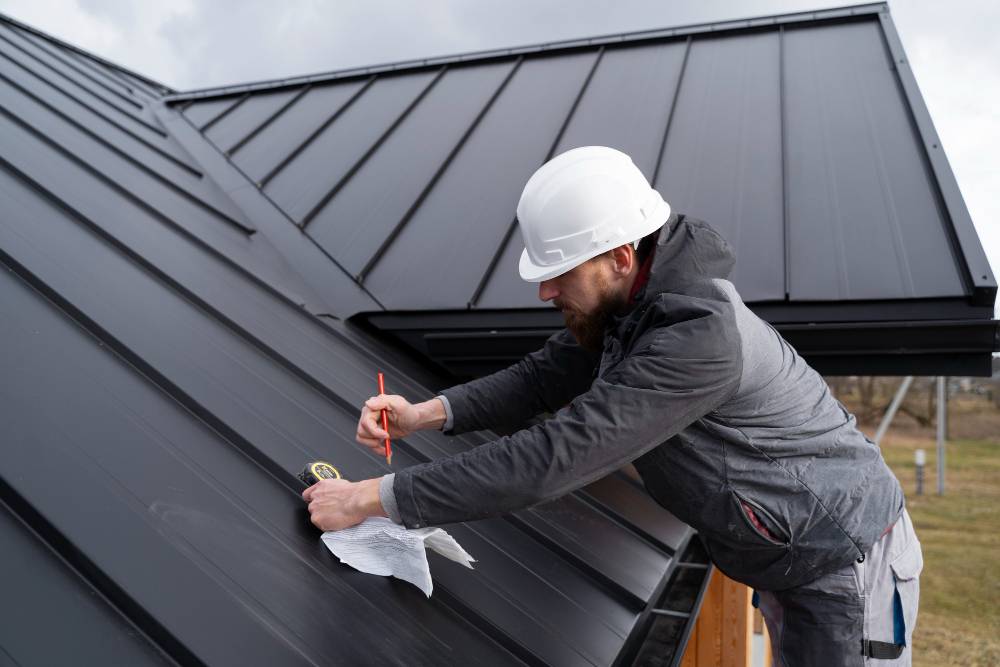Introduction
Keeping your building in top shape requires year-round attention. Each season presents unique challenges, from heavy snowfall in winter to intense heat in summer.
Neglecting seasonal maintenance can lead to costly repairs, inefficient energy usage, and safety hazards.
A well-planned seasonal building maintenance checklist ensures that every aspect of your property remains in optimal condition, reducing long-term expenses and improving property value.
Whether you own a residential complex, commercial property, or industrial facility, implementing a seasonal maintenance plan can help you avoid unexpected issues and ensure a safe, comfortable environment for occupants.
Spring Maintenance Checklist
1. Inspect the Roof and Gutters
Check for damage caused by winter storms, such as missing shingles, leaks, or sagging areas. Address any damage immediately to prevent water intrusion and structural deterioration.
A neglected roof can lead to costly repairs and water damage inside the building. Clean gutters and downspouts to remove accumulated debris, which can cause water to overflow and damage siding, foundations, and landscaping.
Ensure proper drainage to prevent flooding. Consider installing gutter guards to minimize debris buildup.
2. HVAC System Tune-Up
Service air conditioning units before peak summer use to ensure they are operating at full efficiency.
Delaying maintenance can lead to higher energy bills and unexpected breakdowns, especially during heatwaves when HVAC units are in high demand.
Replace air filters and check refrigerant levels to ensure proper airflow and cooling efficiency. Dirty or clogged filters can reduce indoor air quality and strain the system, potentially leading to a breakdown.
Clean air ducts and vents to prevent allergens and dust buildup, improving indoor air quality for a healthier environment.
3. Check Exterior and Landscaping
Inspect the building’s facade for cracks or wear that may have developed over the winter. Repairing these issues early prevents more extensive structural damage and helps maintain the property’s aesthetic appeal.
Trim overgrown trees and bushes to prevent branches from damaging the roof or siding during spring storms. Well-maintained landscaping enhances curb appeal and promotes healthy plant growth while preventing safety hazards.
Reseed lawns and fertilize plants to encourage healthy growth after the harsh winter conditions. Mulch flower beds to retain moisture and reduce weed growth.
4. Pest Control Measures
Check for insect or rodent infestations, as pests become more active in warmer months. Look for signs such as droppings, nests, or chewed materials.
Seal entry points around windows, doors, and utility penetrations to prevent pests from entering the building. Schedule professional pest control services if necessary to mitigate infestations before they become severe.
Inspect attics, basements, and crawl spaces, as these are common hiding spots for pests. Implement preventive measures such as traps and repellents.
5. Plumbing Inspection
Look for leaks or pipe damage caused by freezing temperatures during winter. Even small leaks can lead to significant water damage and increased utility costs if left unaddressed.
Test sump pumps to ensure they function correctly, especially in areas prone to heavy spring rains. A failed sump pump can result in basement flooding and costly repairs.
Check water heaters for sediment buildup and flush them if needed to maintain efficiency and extend their lifespan.

Summer Maintenance Checklist
6. HVAC System Efficiency
Clean condenser coils and ensure proper airflow to maximize cooling efficiency. Overheating or inefficient cooling can lead to increased energy consumption and system failure.
Adjust thermostats for energy efficiency by using programmable settings to avoid unnecessary cooling when the building is unoccupied.
Inspect ductwork for leaks that can reduce cooling efficiency and increase energy costs. Seal any leaks to improve performance.
7. Fire Safety Precautions
Test fire alarms, smoke detectors, and sprinkler systems to ensure they are in working order. Summer heat can increase fire risks, making this an essential task.
Clear fire escape routes and emergency exits of any obstructions to ensure quick and easy evacuation in an emergency.
Conduct fire drills and ensure all fire extinguishers are fully charged and easily accessible.
8. Exterior Painting and Sealing
Repaint or seal areas exposed to direct sunlight to prevent fading, cracking, and peeling. Proper sealing protects wood and masonry from heat and moisture damage. Check for cracks in walkways, foundations, and driveways. Repairing these early prevents trip hazards and more extensive structural damage over time.
9. Window and Door Inspections
Repair or replace damaged weather stripping to keep cool air in and hot air out. Proper insulation reduces energy costs and enhances indoor comfort. Ensure windows open and close properly, as jammed windows can be a safety hazard in case of emergencies.
10. Water Conservation Measures
Inspect irrigation systems for leaks and misaligned sprinkler heads to prevent water waste. Proper irrigation keeps landscaping healthy while reducing water bills. Implement water-efficient landscaping techniques such as mulching and planting drought-resistant plants to conserve water and reduce maintenance needs.
Fall Maintenance Checklist
11. Heating System Preparation
Service furnaces and boilers before winter to ensure they operate efficiently and safely. Delaying maintenance could lead to heating failures during cold months. Replace filters and check for carbon monoxide leaks to prevent health hazards and improve indoor air quality.
12. Roof and Gutter Cleaning
Clear leaves and debris to prevent clogs, which can cause water to back up and damage the roof or foundation. Inspect for loose shingles or leaks and make necessary repairs before winter storms exacerbate existing issues.

13. Exterior Drainage Check
Ensure proper grading to direct water away from the foundation, preventing erosion and basement leaks. Clean and inspect storm drains to avoid blockages that could lead to flooding.
14. Insulation and Weatherproofing
Check doors and windows for drafts and apply weather stripping or caulk as needed to keep heating costs down. Add extra insulation in attics and basements to improve energy efficiency and reduce heat loss.
15. Lighting and Safety Checks
Test outdoor lighting as daylight hours decrease, ensuring proper visibility in parking lots and walkways. Inspect emergency exit signs and pathways to ensure they are well-lit and accessible.
Winter Maintenance Checklist
16. Snow and Ice Removal Plan
Stock up on ice melt and shovels to ensure walkways and parking lots remain safe and accessible. Schedule regular snow removal to prevent hazardous conditions and liability risks.
17. Indoor Air Quality Maintenance
Monitor humidity levels to prevent mold growth, which thrives in warm indoor conditions with poor ventilation. Replace furnace filters regularly to maintain air quality and ensure efficient heating system operation.
18. Plumbing Winterization
Insulate exposed pipes to prevent freezing and bursting, which can cause significant water damage. Drain outdoor hoses and shut off exterior faucets to avoid frozen and burst pipes.
19. Emergency Preparedness
Review emergency evacuation plans with staff or tenants to ensure everyone is aware of protocols. Ensure backup generators are functioning properly to provide power during outages.
20. Security System Review
Test alarms, surveillance cameras, and locks to ensure they are in working order. Reinforce doors and windows against harsh winter weather to prevent break-ins and property damage.

Conclusion
Regular seasonal maintenance is the key to preventing costly repairs and ensuring a safe, comfortable environment.
By following this checklist, you can stay ahead of seasonal challenges and protect your property year-round.
Proactive maintenance not only extends the lifespan of building components but also enhances energy efficiency and occupant comfort.
Need professional help? Consider hiring experts to handle complex maintenance tasks efficiently and ensure thorough inspections.



